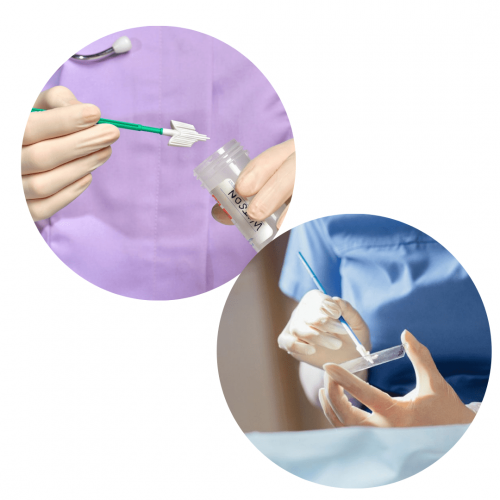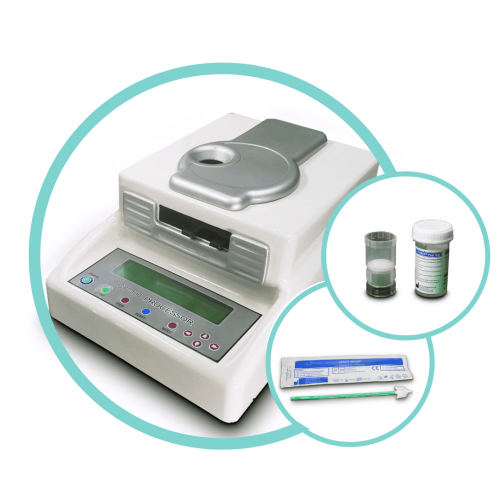Early diagnosis of cancer focuses on detecting symptomatic patients as early as possible so they have the best chance for successful treatment. When cancer care is delayed or inaccessible there is a lower chance of survival, greater problems associated with treatment, and higher costs of care. Early diagnosis improves cancer outcomes by providing care at the earliest possible stage and is, therefore, an important public health strategy in all settings.
There are two distinct strategies that promote early detection, and health planners must understand their difference, relevance to particular cancer types, system requirements, and impact to develop the most effective programs. Early diagnosis identifies symptomatic cancer cases at the earliest possible stage compared to screening that seeks symptomatic cancer or pre-cancerous lesions in a target population without symptoms
The focus of cancer early diagnosis is on people who have symptoms and signs consistent with cancer. The objective is to identify the disease at the earliest possible opportunity and link it to diagnosis and treatment without delay. When done promptly, cancer may be detected at a potentially curable stage, improving survival and quality of life.
There are three steps to early diagnosis:
- Step 1: awareness of cancer symptoms and accessing care
Empower and engage people and communities
Empowering and engaging people and communities enable timely clinical presentation by improving health literacy, reducing stigma, and facilitating access to care. Important objectives of engaging with communities are to improve knowledge and awareness of cancer, to listen to what they report as their major barriers to seeking earlier diagnosis for cancer symptoms and to use their knowledge to develop solutions.
Improve health literacy and reduce cancer stigma
Key messages include awareness of “alarm” or “red flag” symptoms that may represent cancer, how to seek evaluation for these symptoms, and awareness that timely evaluation and treatment can increase the likelihood of a cure.
- Step 2: clinical evaluation, diagnosis, and staging
Improve provider capacity at contact point
The primary care level has an important role in cancer control that includes education and health literacy in cancer prevention, early identification of cancer, diagnostic tests, counseling and care after diagnosis, and follow-up care after treatment.
Strengthen diagnostic and pathology services
Basic cancer diagnostic tests such as ultrasound, X-ray, cytology, and biopsy capability should be available at the secondary care level, and also available at the primary care level where resources permit, to successfully implement cancer early diagnosis programs
The best product from PT ISOTEKINDO INTERTAMA related to early cancer diagnosis, CY-PREP ™ CY-100 Processor which is equipped with several components to perform screening including:
- Sampling using CY-PREP ™ Pap Test CERVIX-BRUM ®
Benefit:
-
- The sampling device is sterile, specially packaged so it is safe for the patient, and designed to take samples of both endocervical and ectocervical cells at the same time.
- Designed to simplify sampling and reduce sampling inconvenience
- Liquid media to contain, transport, and preserve test samples using CY-PREP™ Pap Test Preservation Solution
Benefit:
-
- Protect the sample, and hold it for 3 weeks at room temperature (15-30 °C). Samples are safe from dryness & damage
- Minimizes the risk of important samples being left in the sampling device
- Collect all cervical samples so that all sample cells can be examined
- Provide enough test samples so that patients do not need to re-samples for follow-up tests
- Separating the inspection target material from lenders and dirt using a dual filter.
Benefit:
-
- Make a thin layer of preparation
- Cells become clearer when examined because the cell staining process becomes more perfect and adheres better
- Glass slide for sample attachment using IHC link glass slide
Benefit:
-
- There is an area for writing Patient ID, thus ensuring the accuracy of patient data
- Better reading quality because the IHC link glass slide is positively charged so that cells stick better
- Step 3: access to treatment, including pain relief
Early diagnosis improves cancer outcomes by providing the greatest likelihood of successful treatment, at lower cost and with less complex interventions. The principles to achieve early diagnosis are relevant at all resource levels and include increasing cancer awareness and health participation; promoting accurate clinical evaluation, pathologic diagnosis, and staging; and improving access to care. These programmatic investments are particularly important where disparities are the most profound and to provide access to cancer care for all. A cancer death is a tragedy to a family and community with enormous repercussions. By developing effective strategies to identify cancer early, lives can be saved and the personal, societal and economic costs of cancer care reduced.
Reference:
- WHO (2017). Guide to Cancer Early Diagnosis
- Insert Pack CY-Prep 100 Processor
- World Health Organization (2008). Cancer control: policy and advocacy. WHO Guide for effective programs. Geneva







